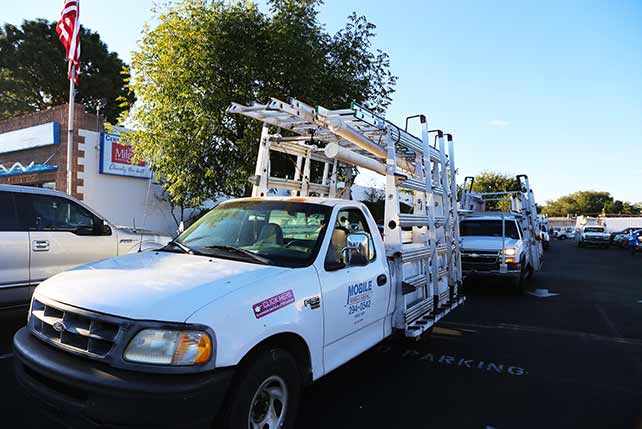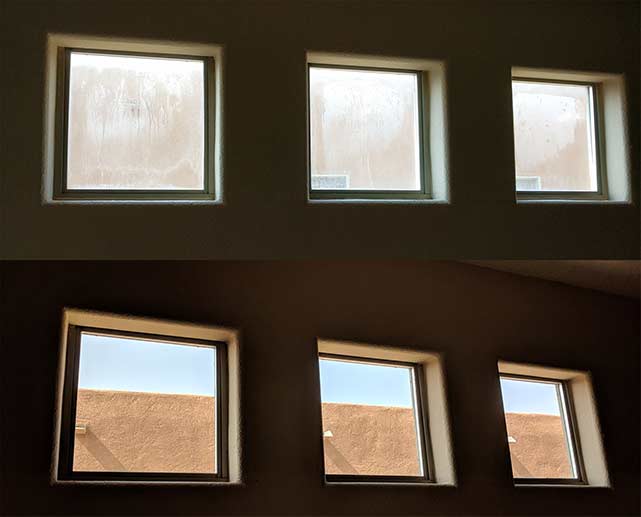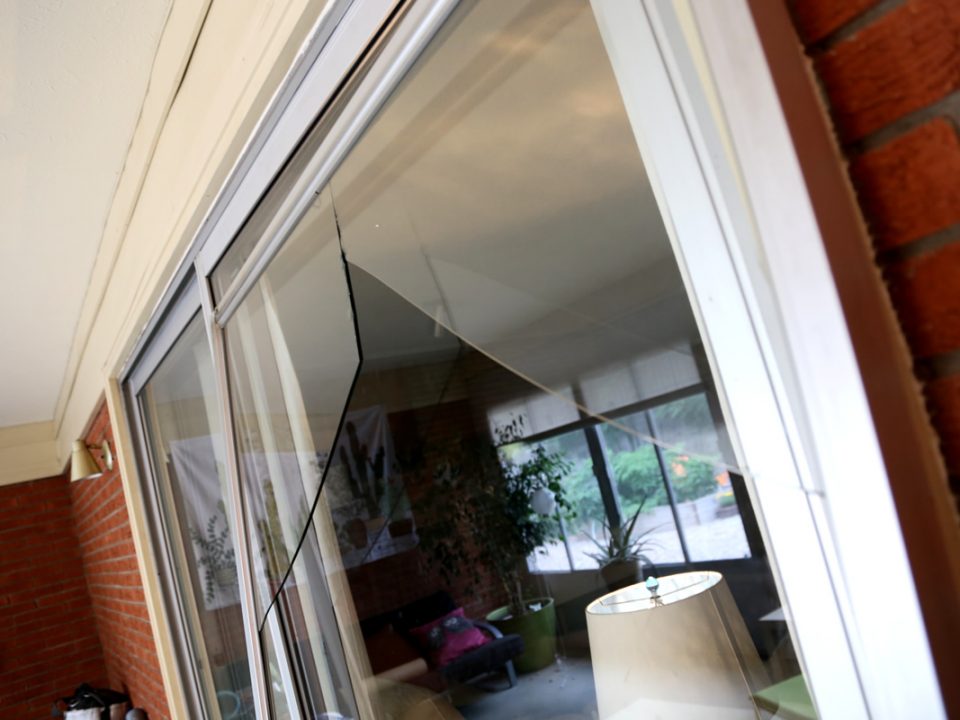
Replacement Window Installation FAQs
October 12, 2018
Broken Glass Patio Door! What Do I Do?
February 15, 2019
My windows are leaking!
The rains bring in the yearly calls about leaking windows. The biggest cause of window and roof leakage stems from the drought we have been experiencing. The extreme lack of moisture will test any type of perimeter seal, whether it is weather-stripping, caulking or the best designed drainage systems. If you hit those seals with a driving rain, you can bet there will be a leak somewhere. Here is a quick check list we use to help find and stop leaks before assuming a major construction or installation flaw.
Water damage above and on the sides of a window: Water is coming from above the window. Check the seal at the top of the window and where the glass meets the window frame. The roof should be checked for cracks especially when parapets are concerned. A water test may be necessary, starting with the window, in order to rule out possible penetration areas. [caption id="attachment_890" align="aligncenter" width="641"] Fogged Windows Replaced[/caption]
Fogged Windows Replaced[/caption]
Water damage below the window: Water is draining through the bottom of the window. The first place to check is the weep holes. Most people don’t realize that windows are designed to leak and then drain through weep holes. They are hidden very well in the most brands but they are there. Drought conditions caused them to fill with dust and dirt and then won’t allow the bottom track to drain properly when hit with rain. The test is very simple to perform to verify your windows are draining properly. Find your weep holes.
Remove the screen and open the sliding portion of the window. With light pressure from a garden hose, fill the track with water. You should see water draining through the weep holes to the outside or you will see they need to be cleaned. If the leaking problem continues, check all seal joints where the window meets the exterior surfaces of the wall.
A common sense approach will usually locate the leak. Sometimes in understanding that the window was designed to hold out only so much water at one time will tell you to take extra measures when dealing with the powerful storms that come with our monsoon season. The most expensive, energy-efficient windows on the market all have air and water testing ratings. It is common for people to remark how terrible their window is because the curtains will move on windy days. Their window may be of poor quality, however the moving curtain may actually be more of an indication as to how windy it is outside as all qualities of windows will allow some air infiltration.
For more Do-it-yourself tips visit the Mobile DIY University on www.mobilescreenandglass.com




